Landscape plants and wildflowers attractive to butterflies for nectar feeding
Many of the flowering plants attractive to bees will also be visited by butterflies. However, butterflies are attracted to flowers almost entirely for feeding on nectar.

Editor's note: Minor updates were made to the "Herbaceous plants attractive to butterflies" table in August 2019.
Many of the flowering plants attractive to bees will also be visited by butterflies. However, butterflies are attracted to flowers almost entirely for feeding on nectar. They do not intentionally seek or collect pollen for food for their young as do bees. Some pollen may become attached to their mouthparts, legs or bodies as they draw nectar from flowers, but not nearly as much as is found on bees. Because of this, as a group butterflies are not as important as bees for pollinating plants, and flowers that are poor pollen sources can still be very attractive to butterflies for food, if they are a good nectar source.
The immature (caterpillar) stages of almost all butterfly species feed on plant leaves. An adult butterfly might readily take nectar from numerous plant species, but their host plant range as a caterpillar is often restricted to one or a few closely related plant species. It is very important to carefully select plant species if supporting butterflies is a goal of your gardening or landscaping. The plant lists below are based on published nectar records for over 80 species of common or widespread butterflies found in the North Central U.S. Plants that are also hosts for butterfly caterpillars are noted. One of the goals of the national plan to protect pollinators is to increase milkweed habitat for monarch butterfly larvae. Planting milkweed will also help monarchs. The best way to do this is to purchase milkweed seed from a commercial supplier. For more information on gardening for monarchs, see Elsner (2015) in this document’s references.
Herbaceous plants attractive to butterflies
Like bees, butterflies seem to find perennial plant flowers more attractive than those of annual plants. It is also important to use mixtures of plants to provide for different flower types, plant height and blooming season. Certain annuals are helpful with this goal in that some bloom season-long.
|
Herbaceous plants attractive to butterflies |
||
|---|---|---|
|
Common name |
Genus species (scientific name) |
Caterpillar host |
|
Alfalfa |
Medicago sativa |
Yes |
|
Asters and daisies |
Aster spp. and related genera |
Yes |
|
Bee balm, bergamot |
Monarda spp. |
No |
|
Black-eyed Susan |
Rudbeckia hirta |
Yes |
|
Blazing star |
Liatris spp. |
No |
|
Butterfly bush |
Buddleia davidii |
No |
|
Clovers (especially red clover, T. pretense) |
Trifolium spp. |
Yes |
|
Coreopsis |
Coreopsis spp. |
No |
|
Dandelion |
Taraxacum officinale |
No |
|
Dogbanes |
Apocynum spp. |
No |
|
Goldenrods |
Solidago spp. |
No |
|
Ironweeds |
Vernonia spp. |
No |
|
Joe-Pye weed |
Eupatorium spp. |
No |
|
Lantana |
Lantana spp. |
No |
|
Milkweeds |
Asclepias spp. |
Yes |
|
Mints |
Mentha spp. |
No |
|
Orange hawkweed |
Hieracium aurantiacum |
No |
|
Phlox |
Phlox spp. |
No |
|
Purple coneflower |
Echinacea purpurea |
No |
|
Speedwell |
Veronica x ‘Sunny Border Blue’ |
No |
|
Spotted Joe-Pye weed |
Eupatorium maculatum |
No |
|
Thistles (but not “star” thistles) |
Cirsium spp. |
Yes |
|
Vetches (but not crown vetch) |
Vicia spp. |
Yes |
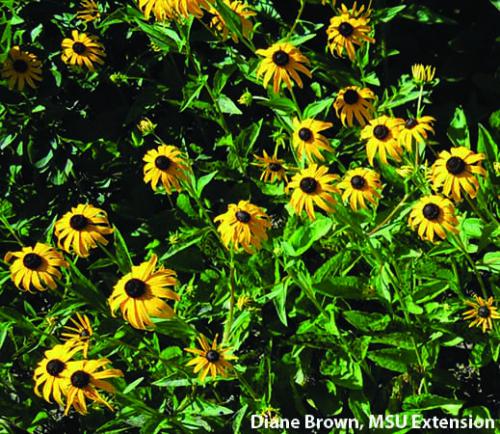
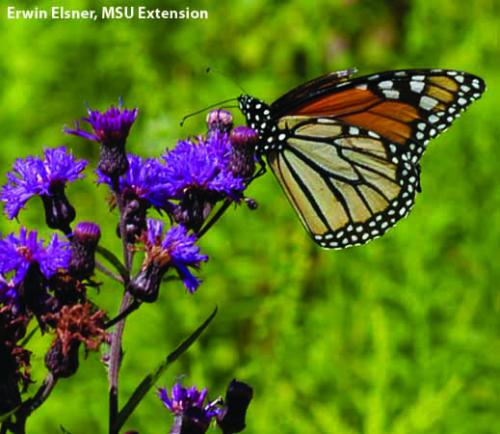
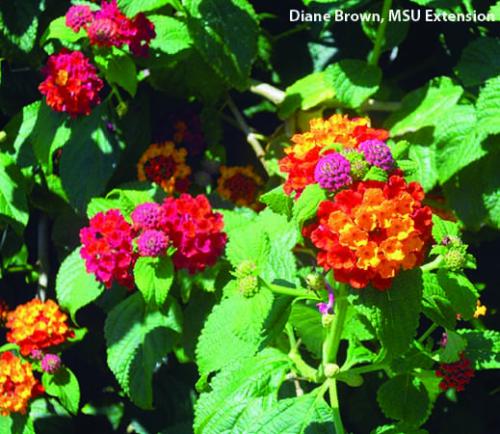
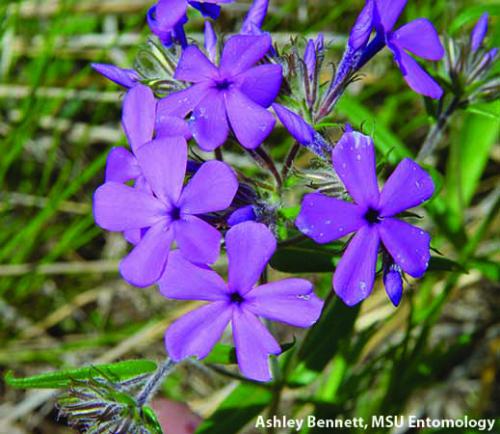
Trees and shrubs attractive to butterflies
In addition to feeding on nectar from tree and shrub flowers, many butterfly species will suck juices from over-ripe fruits once they have fallen to the ground.
|
Trees and shrubs attractive to butterflies |
||
|---|---|---|
|
Common name |
Genus species (scientific name) |
Caterpillar host |
|
Blackberry |
Rubus spp. |
No |
|
Blueberries |
Vaccinium spp. |
Yes |
|
Butterfly bush |
Buddleja davidii |
No |
|
Buttonbush |
Cephalanthus occidentalis |
No |
|
Labrador tea |
Ledum groenlandicum |
Yes |
|
Lilac |
Syringa spp. |
Yes |
|
New Jersey tea |
Ceanothus americanus |
Yes |
|
Redbud |
Cercis canadensis |
Yes |
|
Shrubby cinquefoil |
Potentilla fruticosa |
Yes |
|
Staghorn sumac |
Rhus typhina |
Yes |
|
Wild cherries |
Prunus spp. |
Yes |
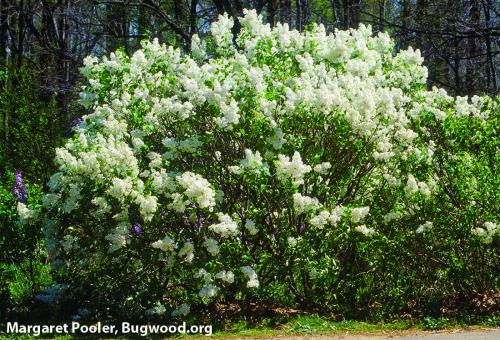
Read the next article in this publication series: Flowers throughout the year
Or return to the beginning of this publication: How to protect and increase pollinators in your landscape



 Print
Print Email
Email





